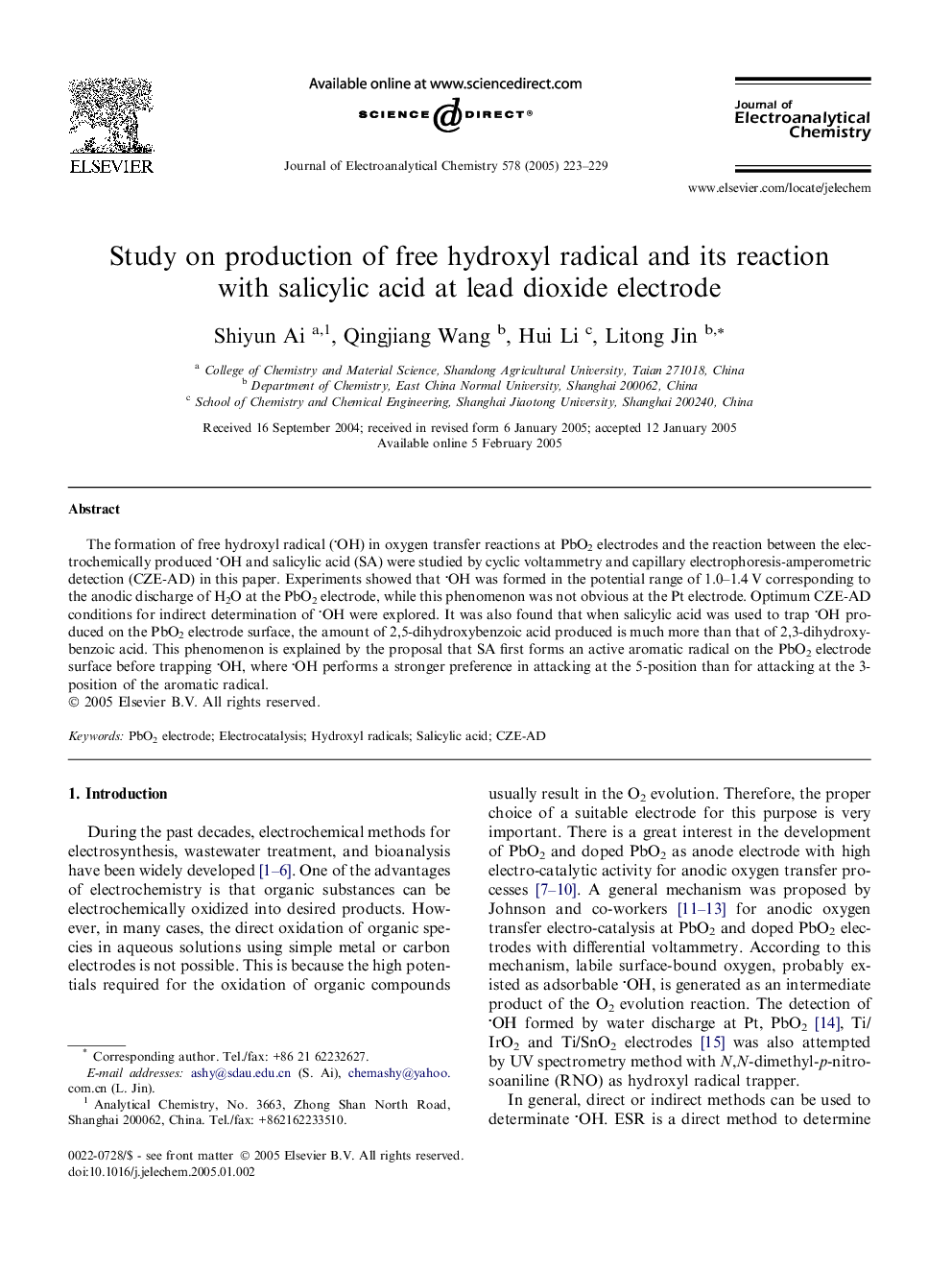| Article ID | Journal | Published Year | Pages | File Type |
|---|---|---|---|---|
| 10276139 | Journal of Electroanalytical Chemistry | 2005 | 7 Pages |
Abstract
The formation of free hydroxyl radical (OH) in oxygen transfer reactions at PbO2 electrodes and the reaction between the electrochemically produced OH and salicylic acid (SA) were studied by cyclic voltammetry and capillary electrophoresis-amperometric detection (CZE-AD) in this paper. Experiments showed that OH was formed in the potential range of 1.0-1.4Â V corresponding to the anodic discharge of H2O at the PbO2 electrode, while this phenomenon was not obvious at the Pt electrode. Optimum CZE-AD conditions for indirect determination of OH were explored. It was also found that when salicylic acid was used to trap OH produced on the PbO2 electrode surface, the amount of 2,5-dihydroxybenzoic acid produced is much more than that of 2,3-dihydroxybenzoic acid. This phenomenon is explained by the proposal that SA first forms an active aromatic radical on the PbO2 electrode surface before trapping OH, where OH performs a stronger preference in attacking at the 5-position than for attacking at the 3-position of the aromatic radical.
Related Topics
Physical Sciences and Engineering
Chemical Engineering
Chemical Engineering (General)
Authors
Shiyun Ai, Qingjiang Wang, Hui Li, Litong Jin,
